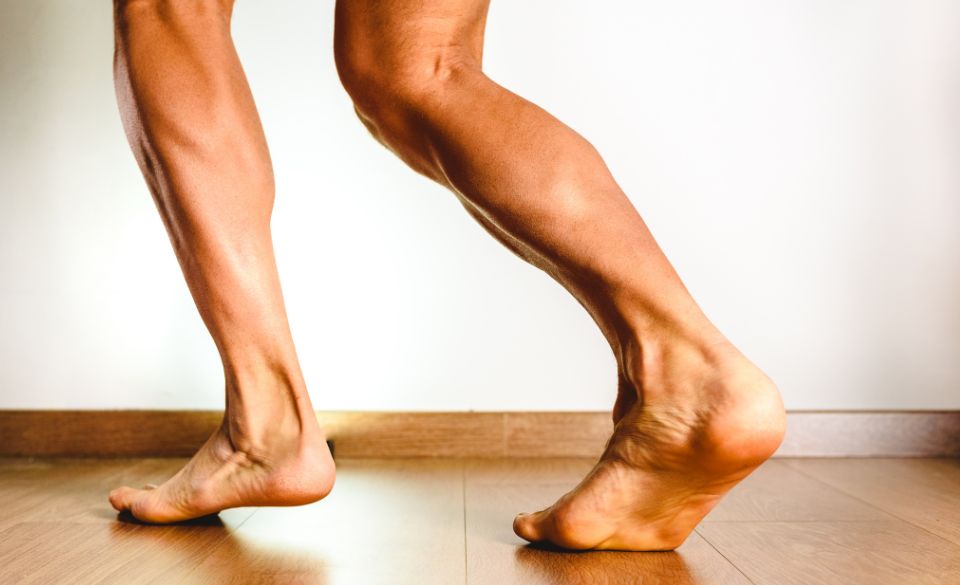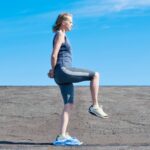
Does Running Give You Bigger Calves? The Relationship Between Running and Calf Size.
Page Contents
Running is a great way to stay in shape and improve cardiovascular health. However, one common question that often arises among runners is whether running can give you bigger calves. While many people believe that running can lead to calf growth, the truth is a bit more complicated. In this article, we’ll explore the relationship between running and calf size, and discuss how you can optimize your running routine to build stronger, more toned calves.
Understanding Calf Muscles
Before diving into whether running can give you bigger calves, it’s important to understand the anatomy of the calf. The calf is made up of two muscles, the gastrocnemius and the soleus, which work together to control ankle movement and provide power for activities like walking, running, and jumping.
The gastrocnemius muscle is the larger of the two and is located on the back of the lower leg. It attaches to the femur bone above the knee and merges with the Achilles tendon to attach to the heel bone. This muscle is primarily responsible for producing the force needed for jumping and sprinting.
The soleus muscle is located beneath the gastrocnemius and also attaches to the heel bone via the Achilles tendon. It is a slower-twitch muscle and is primarily responsible for maintaining posture and endurance activities like distance running.
Together, these muscles provide strength, stability, and power to the lower leg and ankle, making them crucial for many physical activities, including running.
How Calf Muscles Grow
When it comes to calf muscles, genetics play a major role in determining their size and shape. Some people are naturally blessed with bigger, more defined calves, while others may struggle to see significant growth in this area despite their efforts.
However, regardless of your genetics, there are certain things you can do to help your calf muscles grow. One of the most important factors is progressive overload – gradually increasing the weight or resistance used during calf exercises to challenge the muscles and stimulate growth.
Here are some of the most effective exercises for building calf muscles:
Standing calf raises: Stand with your feet hip-width apart and your toes on a raised platform, such as a step or weight plate. Lower your heels down below the level of the platform, then rise up onto your toes as high as you can. Lower back down and repeat.
Seated calf raises: Sit on a bench or machine with a weight plate resting on your thighs. Place the balls of your feet on a raised platform and lift your heels up as high as you can, then lower back down and repeat.
Donkey calf raises: With a partner or machine, position yourself in a bent-over position with your hands on a wall or other support. Your partner or the machine should provide resistance as you rise up onto your toes and then lower back down.
Jump rope: Jumping rope is a great cardiovascular exercise that also works the calf muscles, especially when you focus on jumping on the balls of your feet.
Running: Running is another excellent way to work the calf muscles, particularly when running uphill or on uneven terrain.
In addition to progressive overload, there are other factors that can help your calf muscles grow, including proper nutrition and adequate recovery time. To support muscle growth, it’s important to consume enough protein, as well as carbohydrates and healthy fats. Additionally, getting enough sleep and allowing your muscles time to rest and recover between workouts can help prevent injury and promote muscle growth.
So, does running give you bigger calves? While running can certainly help to strengthen and tone the calf muscles, it may not necessarily lead to significant growth in size. To see noticeable changes in your calf muscles, incorporating targeted strength training exercises that focus on progressive overload is likely to be more effective.
Can Running Alone Build Bigger Calves?
Many people believe that running alone can lead to bigger calf muscles. However, this is a common misconception. While running is an excellent form of cardiovascular exercise that can improve overall health and fitness, it is not a targeted exercise for building larger calf muscles.
The calf muscles, also known as the gastrocnemius and soleus muscles, are located at the back of the lower leg. These muscles are responsible for plantarflexion, or the motion of pointing the toes downward, and they are heavily used during walking, running, and jumping.
While running does engage the calf muscles, it primarily targets the slow-twitch muscle fibers, which are responsible for endurance and are not as effective at building muscle mass as fast-twitch fibers. To build bigger calf muscles, it is necessary to engage in targeted exercises that focus on the fast-twitch muscle fibers.
Targeted exercises for the calf muscles include exercises such as calf raises and jumping exercises such as box jumps and skipping. These exercises place a greater demand on the fast-twitch muscle fibers, which can help to stimulate muscle growth and increase muscle size.
In addition to targeted exercises, proper nutrition is also essential for building bigger calf muscles. Consuming a diet that is high in protein can help to support muscle growth and repair, which can lead to larger calf muscles over time.
It is important to note that genetics also play a role in the size and shape of the calf muscles. Some individuals may have a greater predisposition for larger calf muscles, while others may have a harder time building muscle mass in this area.
How Running Can Impact Calf Size
While running is a great cardiovascular exercise that can provide numerous health benefits, it may not be the best option for those looking to build bigger calf muscles. Running is considered an aerobic exercise that primarily targets the cardiovascular system rather than muscle growth. However, running can still impact calf size in a few ways.
Muscle Endurance: Running requires the calf muscles to contract repeatedly for an extended period. This can improve their endurance, allowing them to sustain longer periods of activity without fatigue. Over time, this may lead to some degree of hypertrophy or growth in the calf muscles, but it is generally not significant.
Fat Loss: Running is also an excellent calorie-burning exercise that can help reduce body fat percentage. As fat is burned, the calf muscles may become more visible and appear more defined. This effect can make the calves appear larger, but it is not the same as actual muscle growth.
Impact Loading: Running involves a lot of impact loading, which means that the calf muscles must work harder to absorb the shock of each footstrike. This can cause some degree of muscle damage, leading to soreness and inflammation. While this can stimulate muscle growth to some extent, it is not the most effective way to build bigger calf muscles.
Genetics: Ultimately, the size and shape of your calves are largely determined by your genetics. Some people are genetically predisposed to have larger, more defined calf muscles, while others may struggle to develop them even with targeted training.
In summary, while running can impact calf size to some degree, it is not the most effective way to build bigger calf muscles. If you want to increase the size and definition of your calves, targeted resistance training that focuses on the calf muscles is the most effective approach.
Factors That Influence Calf Size
While running can help to strengthen and tone the calf muscles, there are several other factors that can influence the size and shape of your calves. Here are some key factors that may impact your calf size:
Genetics: The size and shape of your calves are largely determined by genetics. Some people may naturally have larger or more defined calf muscles than others.
Body composition: Your overall body composition can also play a role in calf size. People with more muscle mass may have larger calves, while those with higher body fat percentages may have less defined calf muscles.
Exercise routine: While running can help to strengthen and tone the calf muscles, other types of exercise may be more effective for building muscle mass in the calves. Strength training exercises that target the calf muscles, such as calf raises, may be more effective at building larger, more defined calves.
Nutrition: Adequate nutrition is essential for muscle growth, and this includes the calf muscles. Eating a balanced diet that is high in protein can help to support muscle growth and development in the calves.
Hormones: Hormones can also play a role in muscle growth and development. Testosterone, for example, is known to promote muscle growth, including in the calves.
Age: As we age, our muscles naturally begin to lose mass and strength. This can impact the size and shape of the calf muscles, and make it more difficult to build muscle mass in this area.
Overall, while running can help to strengthen and tone the calf muscles, it may not be enough to significantly increase calf size on its own. Factors such as genetics, body composition, exercise routine, nutrition, hormones, and age can all play a role in calf size and shape.
Other Exercises for Building Stronger Calves
While running can be an effective cardiovascular exercise, it is not the only way to build strong, defined calves. Here are some other exercises that can help strengthen and tone the calf muscles:
Resistance training: Resistance training exercises, such as calf raises and squats, can be an effective way to build calf muscle mass. These exercises typically involve lifting weights or using resistance bands to work the calf muscles.
Plyometric exercises: Plyometric exercises, such as jump training and box jumps, can help to build explosive power in the calf muscles. These exercises typically involve rapid and forceful contractions of the calf muscles, which can help to build muscle mass and improve overall calf strength.
Sports-specific training: If you are an athlete or participate in sports that require explosive movements, such as basketball or volleyball, incorporating sports-specific training exercises can be an effective way to build strong and powerful calf muscles.
Stretching and mobility exercises: Stretching and mobility exercises, such as foam rolling and calf stretches, can help to improve calf flexibility and mobility, which can in turn help to improve calf strength and reduce the risk of injury.
Cross-training: Incorporating a variety of exercises into your workout routine, such as cycling or swimming, can help to work the calf muscles in different ways and promote overall calf strength and development.
It’s important to note that in addition to exercise, diet and genetics also play a role in determining calf size. Eating a balanced diet that is high in protein and low in processed foods can help to support muscle growth and definition. Additionally, genetics can influence calf size and shape, so it’s important to focus on building strength and definition rather than trying to change the natural shape of your calves.
Tips for Building Stronger, More Toned Calves
Having strong and toned calves not only looks great but also plays a crucial role in many physical activities such as running, jumping, and lifting weights. If you’re looking to build stronger, more toned calves, there are several things you can do beyond just running. Here are some tips:
Incorporate Resistance Training: Running alone may not be enough to build bigger calf muscles. Resistance training, such as calf raises, can help to stimulate muscle growth and increase the size of your calves. To do calf raises, stand on a raised surface with your heels hanging off the edge, and then rise up on your toes as high as possible, and then lower your heels back down to the starting position.
Vary Your Running Terrain: Running on hills or inclines can help to increase the load on your calf muscles, leading to greater muscle activation and growth.
Stretch Your Calves: Tight calf muscles can limit mobility and cause discomfort, so it’s important to stretch them regularly. Hold a stretch for 20-30 seconds and repeat it several times a day. Some effective calf stretches include standing calf stretches, downward dog pose in yoga, and foam rolling.
Fuel Your Body: A balanced diet that provides adequate protein is essential for muscle growth. Make sure to eat enough lean protein sources such as chicken, fish, and legumes. Additionally, staying hydrated can help prevent muscle cramps and aid in muscle recovery.
Rest and Recovery: Adequate rest is just as important as exercise for muscle growth. Allow your calves to recover between workouts, and avoid overtraining. Rest, proper nutrition, and sleep can help your muscles recover and grow.
Cross-training: Engage in other types of exercises that work the calves, such as jump rope, cycling, or swimming. This helps to vary the stress placed on the calves and prevent plateauing of muscle growth.
In conclusion, building stronger, more toned calves requires a combination of targeted exercises, proper nutrition, rest, and recovery. While running can contribute to calf muscle growth, it’s not enough to build significant muscle mass. Incorporating resistance training, varying running terrain, stretching, and cross-training are key strategies to building stronger and more defined calves.
Conclusion
In conclusion, running alone is unlikely to build significantly bigger calves, but it can help improve their strength and endurance. Building larger, more toned calves requires a combination of targeted exercises, proper nutrition, and sufficient rest and recovery. Other exercises such as calf raises, jumping exercises, and strength training can also help to build stronger, more defined calf muscles. It’s important to keep in mind that genetics, age, and other factors can influence calf size, and that results may take time and consistency. By incorporating a variety of exercises and following a well-rounded fitness routine, you can work towards building stronger, more toned calves.


